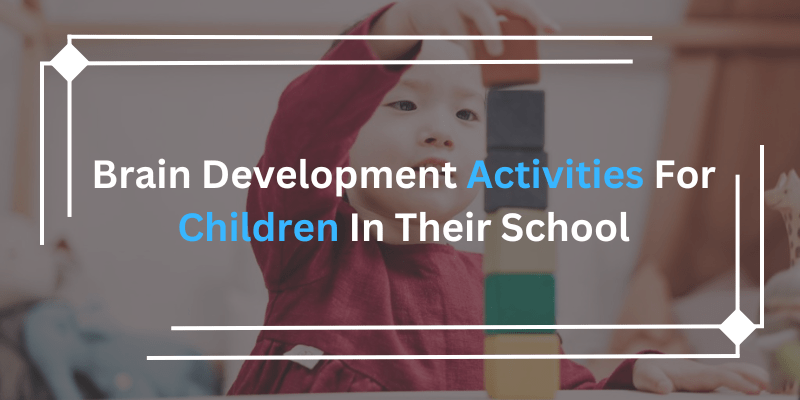Brain Development Activities For Children In Their School
Brain development activities are crucial for children, especially during their early years of development, as the brain is constantly growing and forming new connections. These activities help to stimulate and enhance brain growth and development, leading to improved cognitive abilities and overall brain function. There are numerous brain development activities that students can engage in, ranging from concentration exercises to artistic pursuits.
Concentration Exercises:
Concentration exercises for students involve focusing on a single task or object for an extended period of time. Examples of concentration exercises include:
- Counting backwards from 100 by 3s.
- Drawing a picture and trying to replicate it from memory.
- Solving a crossword puzzle.
These activities help to improve focus and attention, as well as problem-solving skills.
Memory Improvement Techniques:
Memory improvement techniques are also crucial for brain development. There are several ways to improve memory, including using mnemonic devices such as acronyms or rhymes to remember lists or information, repeating information out loud to commit it to memory, and practicing visualization, where you create a mental image of the information you are trying to remember.
Right Brain Training:
Right brain training is another effective brain development activity. The right brain is responsible for creativity, intuition, and emotion and can be trained through activities such as drawing or painting, writing poetry or stories, and playing music or singing.
Reading Books:
Reading is another crucial brain development activity for students. Reading helps to improve vocabulary, language skills, and comprehension, all of which are essential for cognitive development. It also helps with memory, attention span, and problem-solving skills.
Hands-on activities and experiments are also excellent brain development activities for students. These types of activities allow students to participate actively in the learning process, which helps with problem-solving, critical thinking, and creativity. Examples of hands-on activities and experiments include building a model, conducting a science experiment, or cooking a recipe.
Playing Games:
Playing games, such as puzzles or memory games, is also a great way to stimulate brain development. These types of games help with spatial reasoning, attention to detail, and problem-solving skills.
Physical Activities:
Physical activities, such as sports or dancing, can also contribute to brain development. These activities help with coordination, balance, and problem-solving, as well as improving memory and concentration.
Artistic Activities:
Artistic activities, such as drawing, painting, or music, are also beneficial for brain development. These activities help with creativity, problem-solving, and self-expression.
Conclusion:
Overall, it is essential for students of all ages to engage in various brain development activities to ensure that their brains are growing and developing correctly. These activities can include concentration exercises, memory improvement techniques, right brain training, reading, hands-on activities and experiments, playing games, physical activities, and artistic pursuits. By participating in a variety of brain development activities, students can improve their cognitive abilities, problem-solving skills, creativity, and overall brain function.

